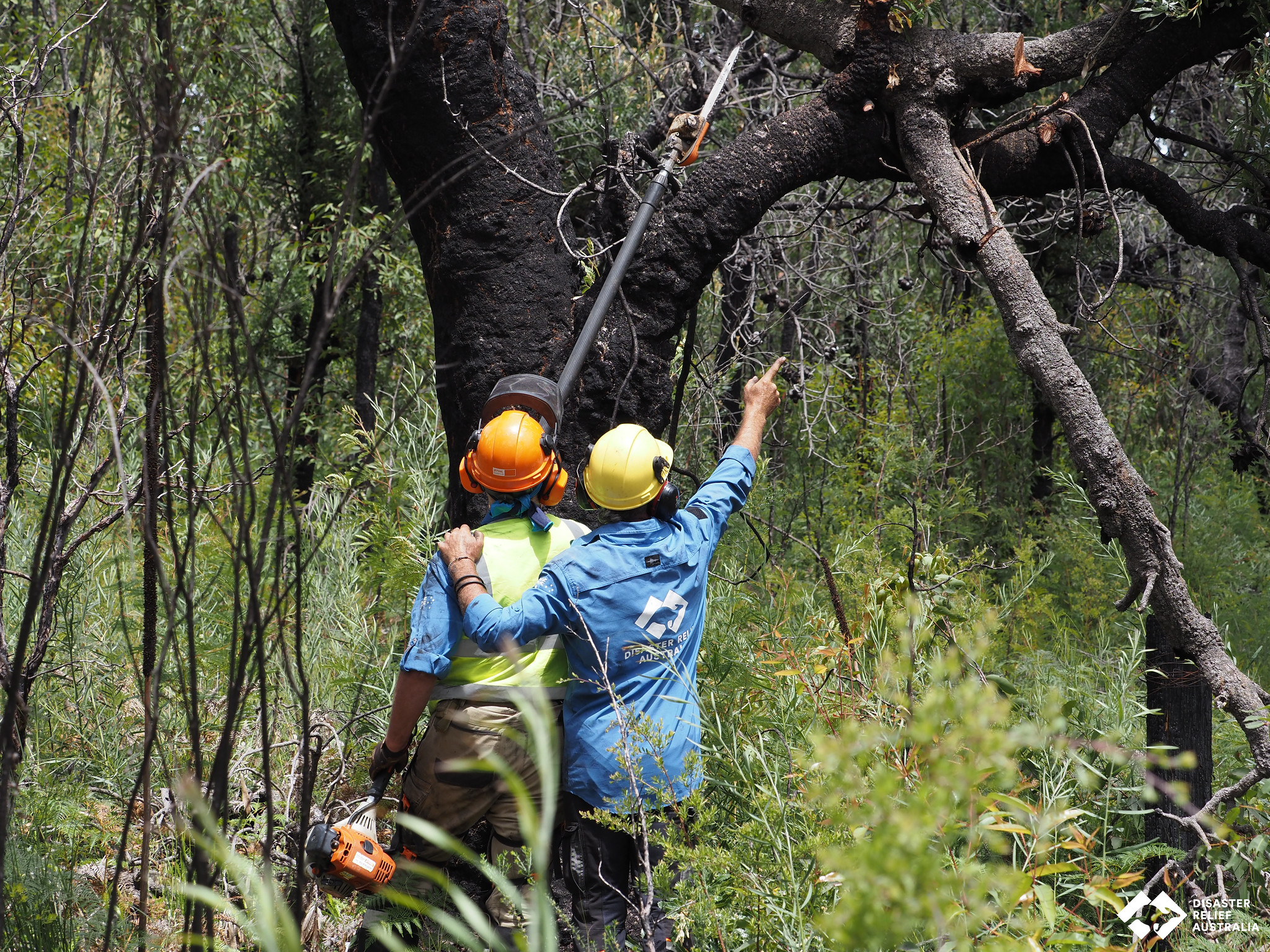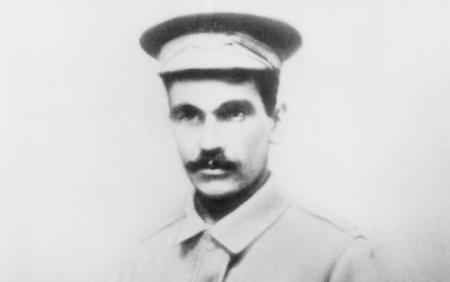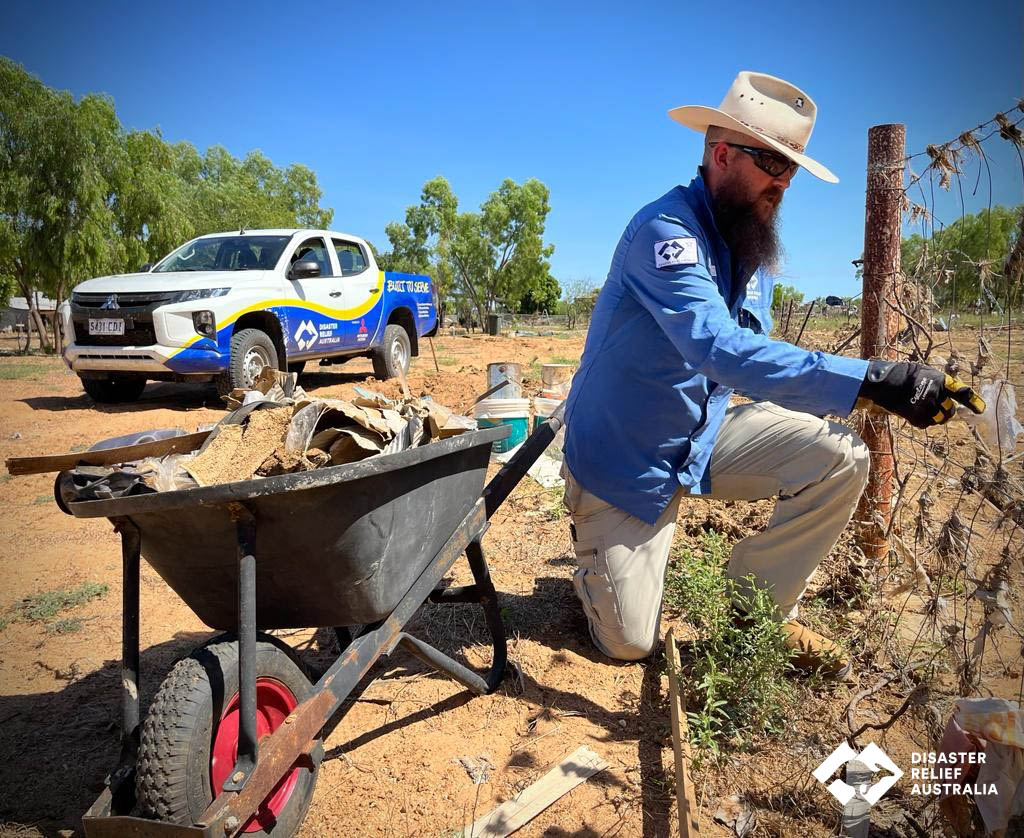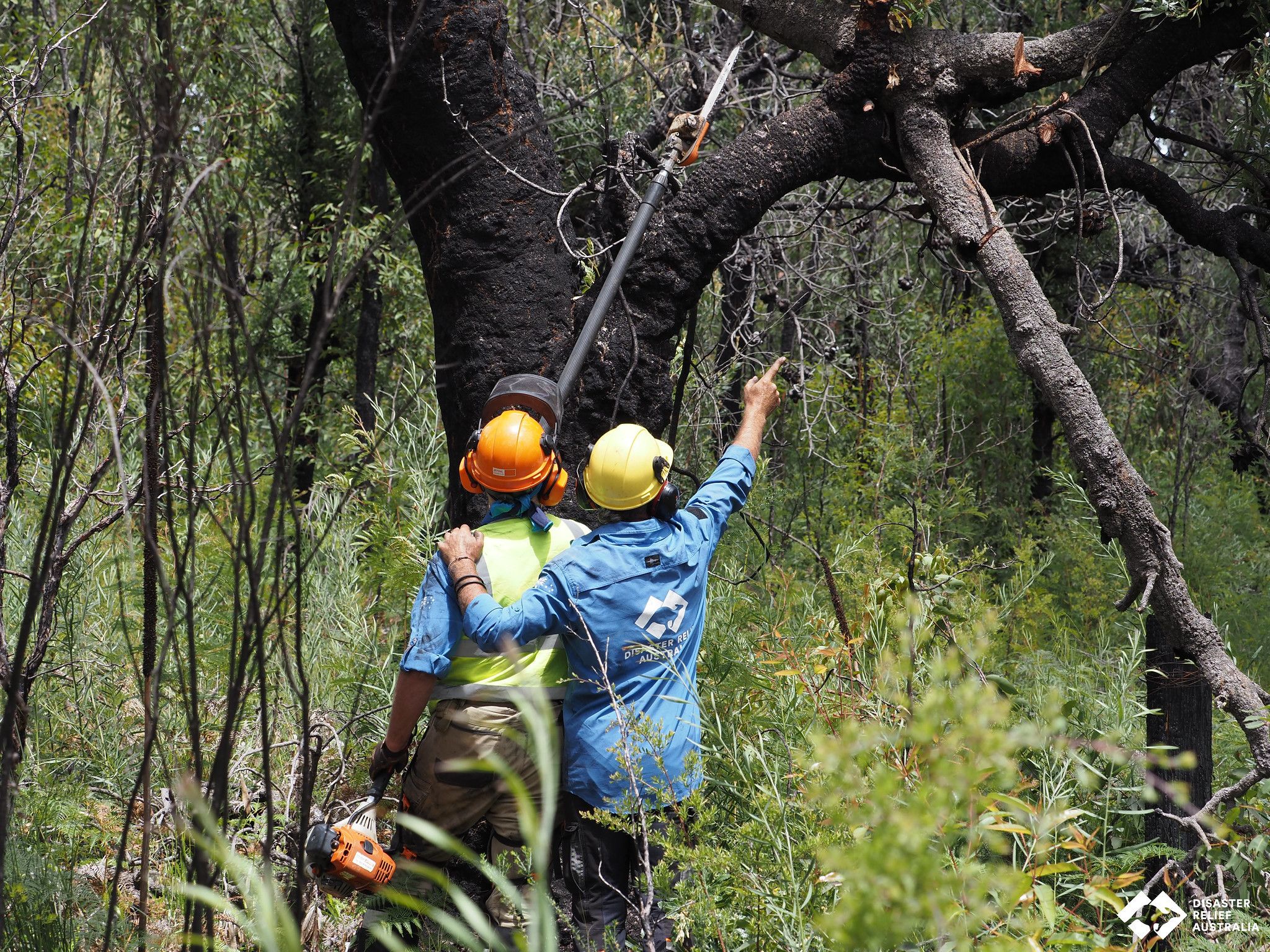DavidBefore moving to Gipsy Point in 2009, I was living in Melbourne and just felt like a tree and sea change, I’ve been here about 12 years now with my partner and our dog Trixie.
The day the fire came through was pretty heavy, we had been watching it on the internet for a few days and we knew it was heading our way, it was a pretty tricky situation because we knew that the resources were spread very thin. All we had was one Land Cruiser ‘slip-on’ that has 400 letters of water. So we had to be pretty careful, we could have done with some more help, but it was what it was and we just made it a priority to protect life.
As the fire came closer the scale of it made me quite concerned for the safety of the people in Gipsy Point. I had been mucking around up on my property, but quickly realised I needed to just fall back to make sure everyone was prepared and okay, because if I was there was a chance the fire could have got behind me and could have been really bad. So I made the decision just to leave our property and defend that little township down the road.
The first fire front came through and we’re actually pretty lucky in that the wind wasn’t as crazy as it might have been. Soon enough one house went up, we just can’t fight a structure fire with a slip on. Especially without mains water, it’s all tanks and with no electricity most of the pumps being electric means we have no pressure.
The fire pretty much burnt all of the property, we lost the house, two cabins, a caravan, and the tracker. I got a couple of car loads out and some motorbikes.
It’s been a tough few years for us. We have been busy working and trying to figure things out. We’ve only been back out on the block for less than a year, I’ve had limited time and I’ve lost a lot of my tools and equipment. So what Disaster Relief Australia did in one day would have taken me weeks, if not months, you know, so yeah, we’re really grateful. It’s been very nice to meet all your people. Down the track I might have to sign up with Disaster Relief Australia, get involved and pass on the help.
Operation Thorpe
It is difficult to forget the out-of-control bushfire engulfing the Gippsland township of Mallacoota. Images of thousands of people taking refuge on a beach under red angry skies became synonymous with the plight of Australian communities overwhelmed by the Black Summer bushfires of 2019/20.
Nearly two years later, Mallacoota was still in need of post bushfire assistance. Scant recovery had taken place since the fires in part due to COVID preventive measures limiting disaster recovery activities. When restrictions eased, Disaster Relief Australia launched a short-term operation to fell dangerous trees, clear fences of vegetation and debris and perform general clean-up work.

Victorian Bushfire Recovery 2021
Disaster Relief Australia (DRA) planned and conducted a short-term response to Mallacoota and surrounds, assisting in bushfire response and recovery efforts. The response ran over 14 days. The purpose of the operation was to make safe and clean up community and residential properties for future reinstatement.
DRA’s strike teams provided chainsaw operations, fence line repairs and debris removal as required, and clean up efforts to the affected community in coordination with local and state authorities. This was be achieved through:
- Deployment of plant comprising of skid steer loader, tipper truck, chipper and clearing saws
- Tree works and vegetation management

The story behind the name
As part of its respect to military veterans, Disaster Relief Australia names its relief operations after a local veteran in honour of their service to the community, and in turn ours. Operation Thorpe is named for Lance Corporal Harry Thorpe, an indigenous solider who was awarded the Military Medal, serving in the Australian Imperial Force from 1916 – 1918 during WWI.
Harry was a Brabuwoloong man of the Gunaikrnai nation and a courageous soldier enlisted in the Australian Imperial Force at Sale on 12 February 1916. In 1916 Harry was one of an estimated 800 to 1000 indigenous people who volunteered to enlist during WWI. Today, the name Uncle Harry Thorpe is inscribed on a memorial in Lakes Entrance, where a street called Thorpe’s Lane is also named in his honour. For his family, Uncle Harry’s is a story of courage that will never be forgotten.
Harry embarked for overseas service in April, 1916, and in July he joined the 7th Battalion in France. He was wounded in action at Pozières on 19 August and did not rejoin his unit until November later that year. Promoted Lance Corporal in January 1917, he was again wounded at Bullecourt on 29 April, but a month later returned to duty. Well regarded in his unit as a footballer and athlete at brigade or divisional sports, he was also noted as a scout.
In October 1917, during operations to capture Broodseinde Ridge during the third battle of Ypres in Belgium, Harry displayed tremendous courage and leadership while clearing the dugouts and concrete guard posts, known as pillboxes, of remaining enemy resistance. He was promoted to corporal and awarded the Military Medal, although he was originally recommended for the Distinguished Conduct Medal. The military citation commended Harry’s “disregard of all danger” and described him as an inspiration to his men. During an advance on 9 August 1918 at Lihons Wood, south-west of Vauvillers, France, a stretcher-bearer found Thorpe shot in the stomach. He died shortly after being taken to a dressing station near Bayonvillers and was buried in Heath military cemetery, Harbonnières.
Operation impact
Volunteer hours
Volunteers deployed
Work orders completed
Community costs saved
South Australian Flood Recovery 2023
DRA’s flood recovery operation in South Australia’s Riverland region

Get involved
Planning for upcoming operational deployments is now underway. If you are keen to participate or find out more, express your interest today.

